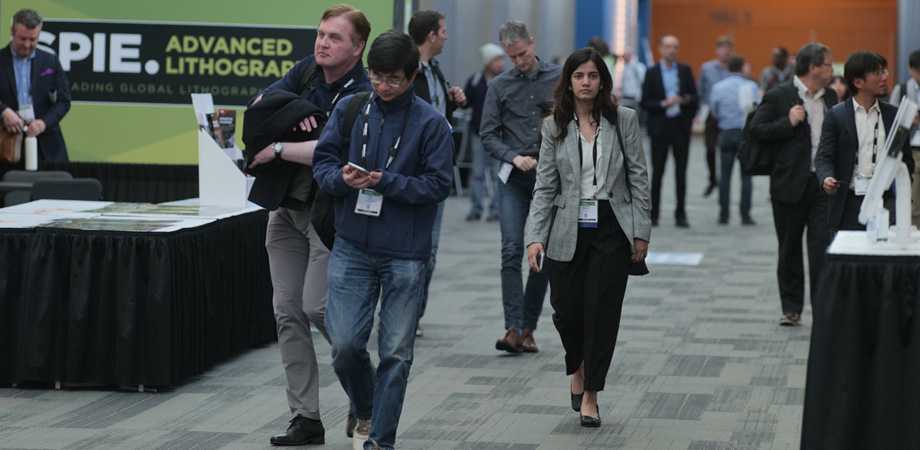Developing Nanoscale Rulers

As EUV lithography processes become common, the industry is confronting — and solving a problem: how do you measure something so small? It isn't enough to make such measurements once or slowly. In high-volume manufacturing, measurements must be done often and quickly without sacrificing quality.
A series of talks at the February 2020 SPIE Advanced Lithography conference highlighted problems and solutions. Zhigang Wang of Hitachi High-Tech Group summed up the situation when he said, "We're always asked by our customers to see smaller patterns and to measure smaller patterns."
Among other things, Hitachi High-Tech makes critical dimension scanning electron microscope (CD-SEM) systems. These are used to measure the performance of EUV lithography steppers by looking at resist and film patterns on test and product wafers. In a large wafer fabrication facility engaged in high-volume manufacturing, there are many CD-SEM systems doing such measurements. The data produced is critical to ensuring chip performance and yield.
A key point, Wang said, is that this requirement means that all the CD-SEM systems should produce the same readings when given the same wafers to measure. However, there are slight variations between machines, which is no problem if the differences are small.
How small? In the case of advanced processes produced using EUV lithography, the tool matching error budget between measurement systems is around 0.01 to 0.005 nm — with the latter roughly the diameter of a hydrogen atom. To achieve that level of performance, Hitachi High-Tech ensures hardware uniformity, calibrates tools, monitors the electron beams that do the imaging, installs electromagnetic shields to protect against environmental factors, and takes other measures. In his talk, Wang presented data that indicated the tightest requirements are being met.
What happens, though, if the measurement alters what's being measured? Shimon Levi, a product marketing manager at Applied Materials, discussed that problem in his talk.
The issue of measurement impact shows up when a CD-SEM images the resist used in EUV lithography. The electron beam that does the imaging makes the resist shrink, with the amount of damage being related to the electron energy of the beam. Tests showed that the amount of resist shrinkage goes up as beam energy does, Levi reported.
He added, though, that higher energy increased contrast and that helped decrease the measurement uncertainty. This happens because higher contrast made it easier to spot the difference between the underlying silicon substrate and the resist.
Since it is not possible to dial the beam energy to nothing, the industry will have to account for the loss of resist during such measurements as the problem is not going to get better. In fact, it's headed in the opposite direction. "If we're going to see smaller and smaller patterns, resist shrink is going to become more and more of an issue," Levi said.
CD-SEM measurements of patterned using resist are often done on test wafers, but it is possible to gauge features on product wafers using other techniques. In a presentation, Ewoud van West, ASML product manager of business line applications, covered a new tool his company had helped develop and Samsung is testing out.
A similar scheme has been used for years in deep UV lithography, which uses light sources of 193-nm wavelength and above. The concept uses a special structure, which is printed on the wafer. Looking at the structure reveals the state of focus of the lithography tool, with this done without having to process special wafers.
"This can be done on actual product wafers in line. No need for monitors or special wafers," van West said.
The actual measurement is done using scatterometry, an interferometric technique that teases out information about dimensions that are far below the wavelength of light. Scatterometry is fast and widely used for semiconductor feature and film measurements.
Testing done by Samsung shows that the structure-based, in-line measurement scheme is promising. The technique could be used to actually correct the focus of EUV lithography tools, with simulations indicating about a 20 percent improvement in performance is possible, van West said.
Hank Hogan is a science writer based in Reno, Nevada.
| Enjoy this article? Get similar news in your inbox |
|



